A Minyan of Cedar Waxwings
The delights of watching a flock of berry-eaters practice their cautious calculus.
Yesterday my wife, Sara, spent three hours standing stock-still on a basketball court near where we live in Berkeley, waiting to take photos of Cedar Waxwings feasting on Pyracantha berries. At the moment when I joined her there — about, oh, two hours and 45 minutes into her vigil — no feeding was happening. There were a couple of bushes packed with luscious, as-yet-uneaten bright-red berries; above them, empty transmission wires.
“Just wait,” she whispered. I silently noted to myself that it was incredibly friggin’ cold and windy out there.
As Sara pointed out to me, about 50 birds were perched high up in a nearby tree. Over the course of her observations, they’d already gone a few times through a certain progression. In Sara’s words: “One brave member of the flock, a scout, would sit on the wire near the berry bushes. Then after 15 minutes two more would join the first bird. Then a few more would land. Finally the rest of the flock would fly over, and they’d go into a feeding frenzy. Inevitably a biker or pedestrian would pass by the bushes, and all the birds would fly back up into the tall tree! Very frustrating, but very fun for me!”
I was fascinated to learn that the flock had this heroic alpha bird, whom I nicknamed Scout (I know I should have worked harder on the nickname, but it was COLD!). Also, that it was only when he’d been joined on the wire by a small vanguard of hardy followers — a minyan, if you will — that things could really get going.
Sara got back into birding when she retired in June of 2020, after 35 years of public-school teaching. The first few times I joined her — riding our e-bikes along the San Francisco Bay Trail — it was as a bemused nature-phobe, a persona begun in my Manhattan childhood and then cultivated over decades of being intensely ill-at-ease whenever I was more than a few feet away from an excellent bathroom. (I still feel that way about bathrooms.) I love Sara with all my heart, and I was thrilled to see her get so much joy from checking out the local birds — or, as she calls them, “boiids” (yes, with two “i’s,” for that extra boinginess). But then, to my amazement, I started getting obsessed with birding myself. I developed favorites, though I learned from Sara that I should refrain from pointing and yelling out their name when I spotted them (“Oystercatcher!” “Surf Scoter!”), which might cause them to fly away. I also found out that some birds don’t like having humans staring at them (yes, I’m thinking about you, Osprey who flew all the way over from a radio tower near Point Isabel just to aim a stream of poo at me!).
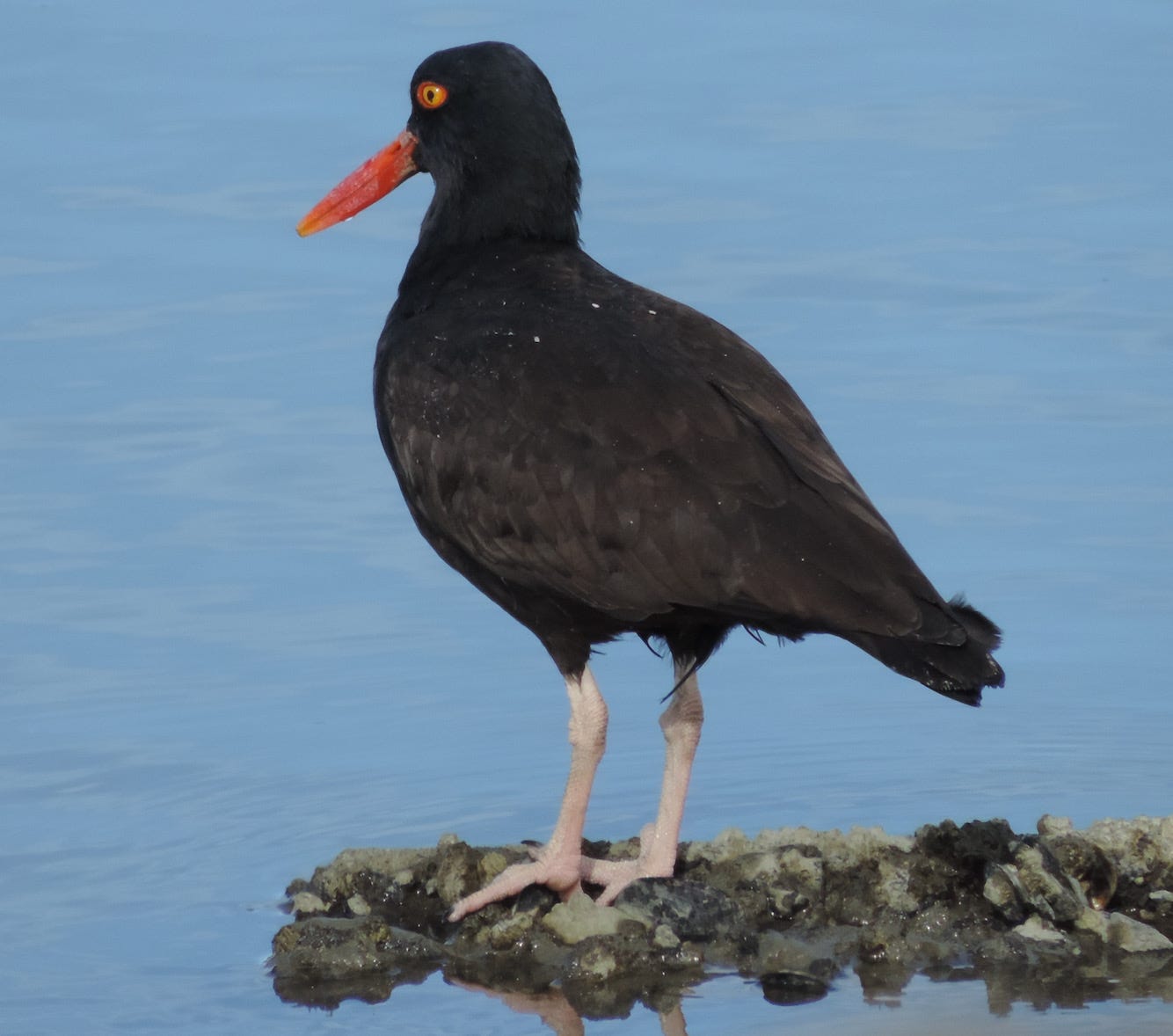
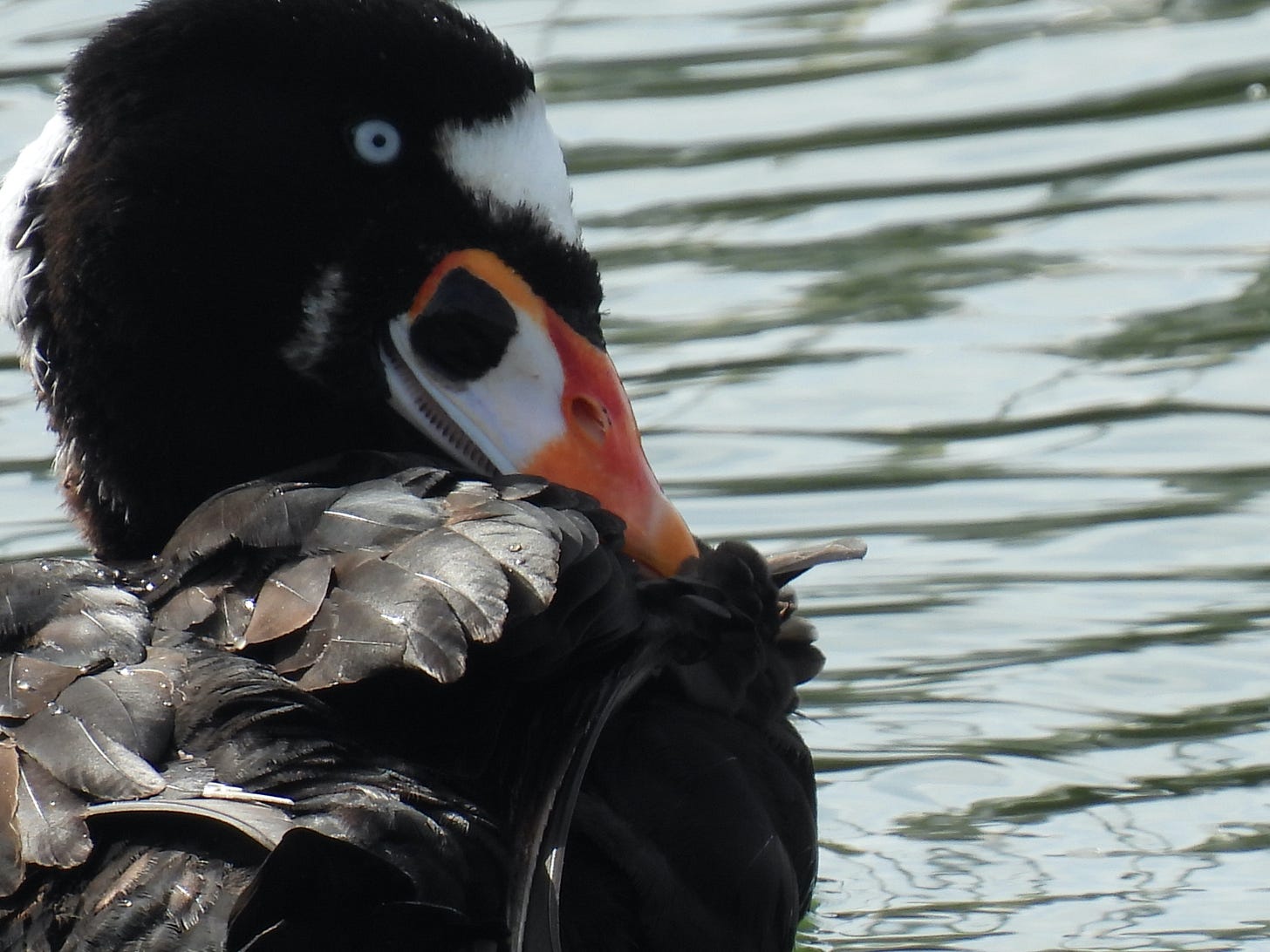
But I came here today to tell you about those Cedar Waxwings! So here are some of Sara’s photos from yesterday:
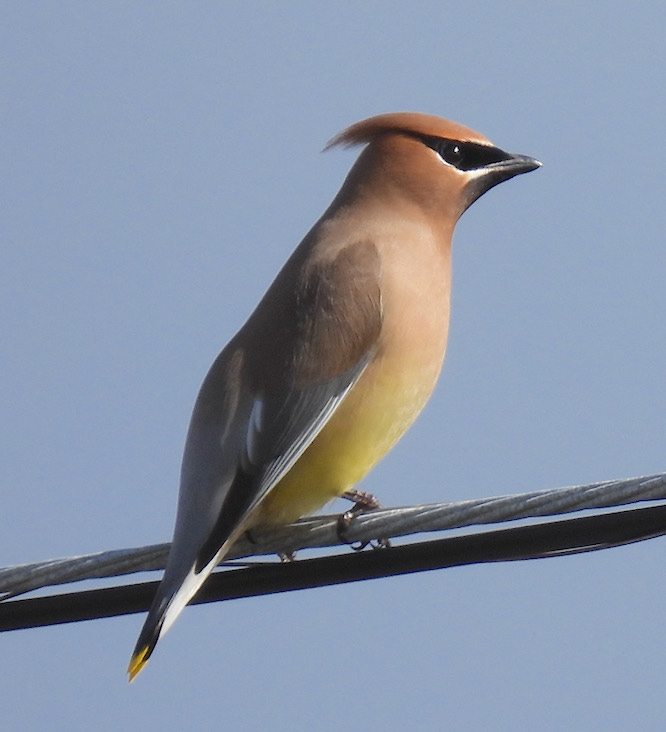
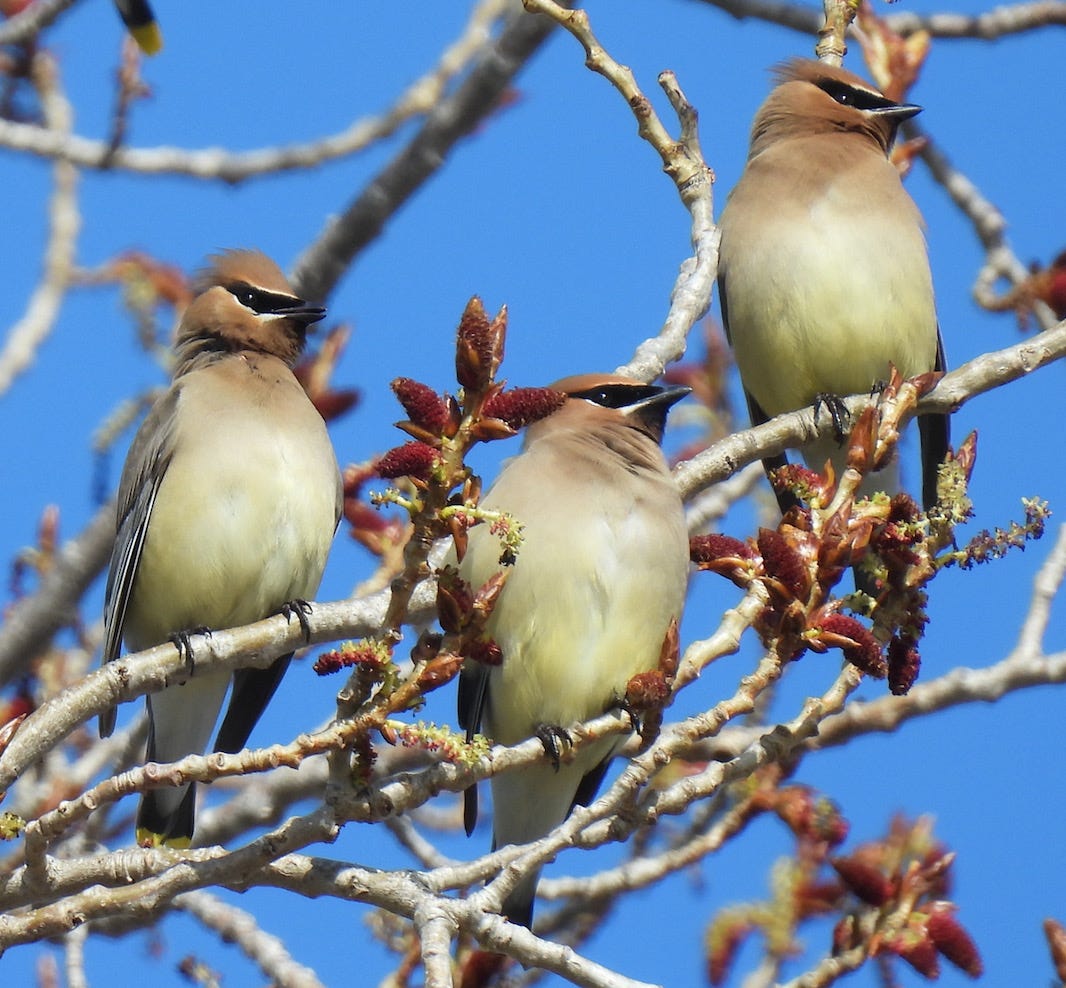
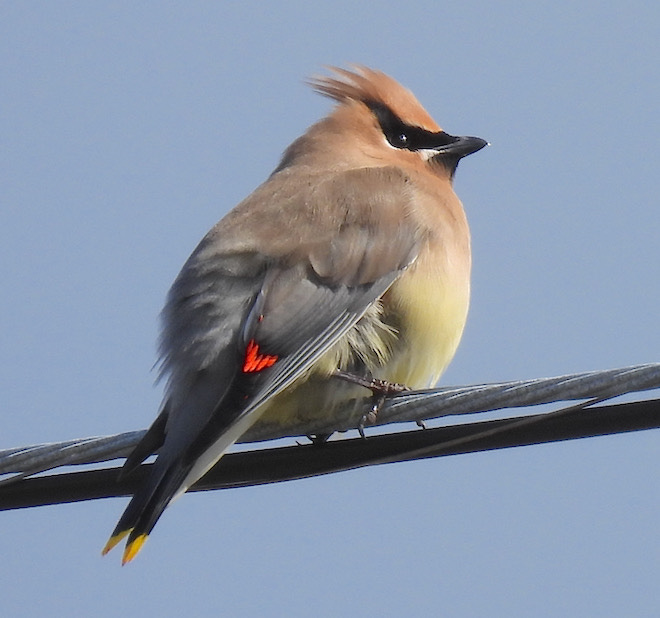
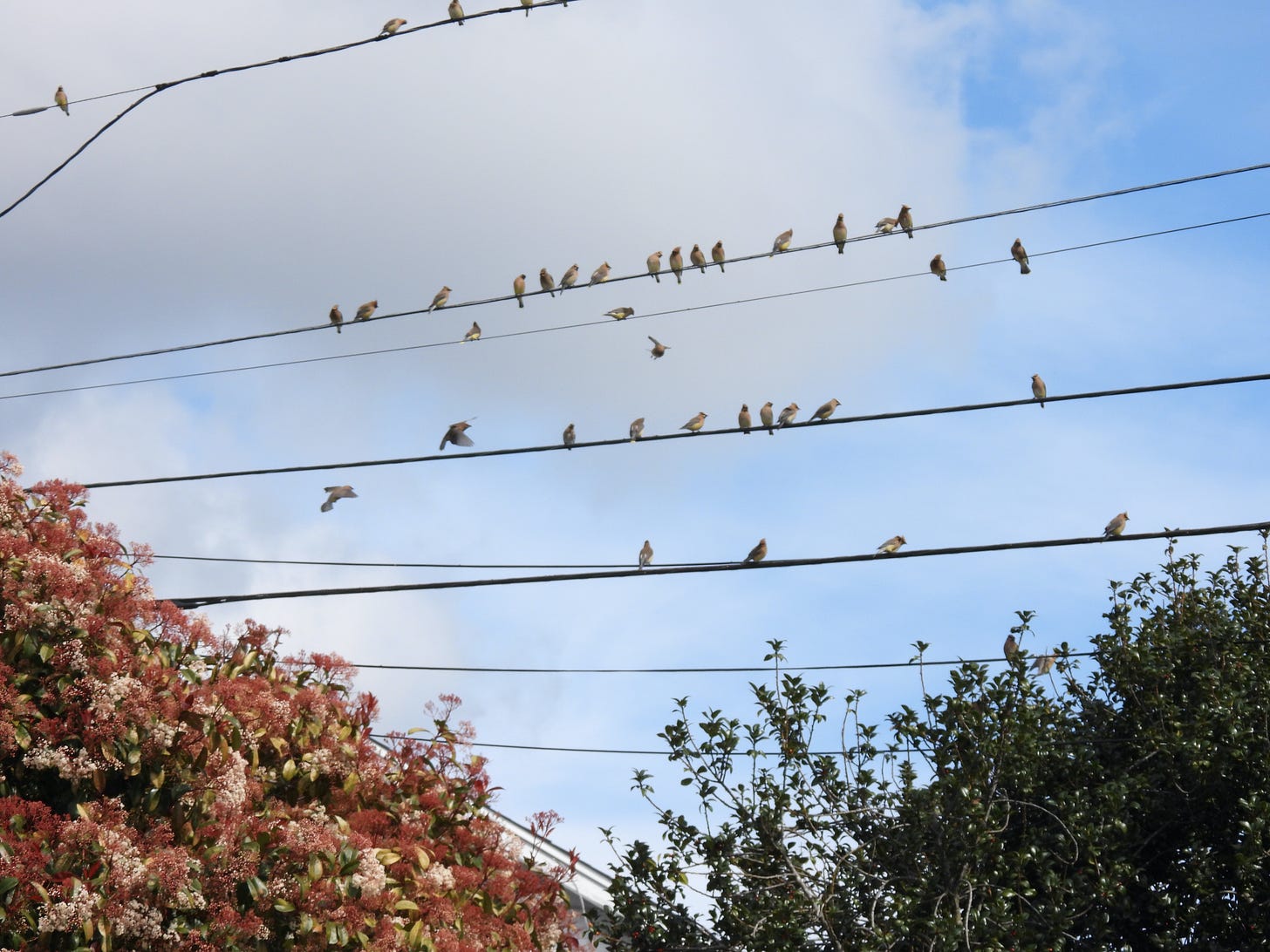
Sara and I love how these birds seem to draw comfort and safety from their community. Maybe there’s a lesson in there somewhere?





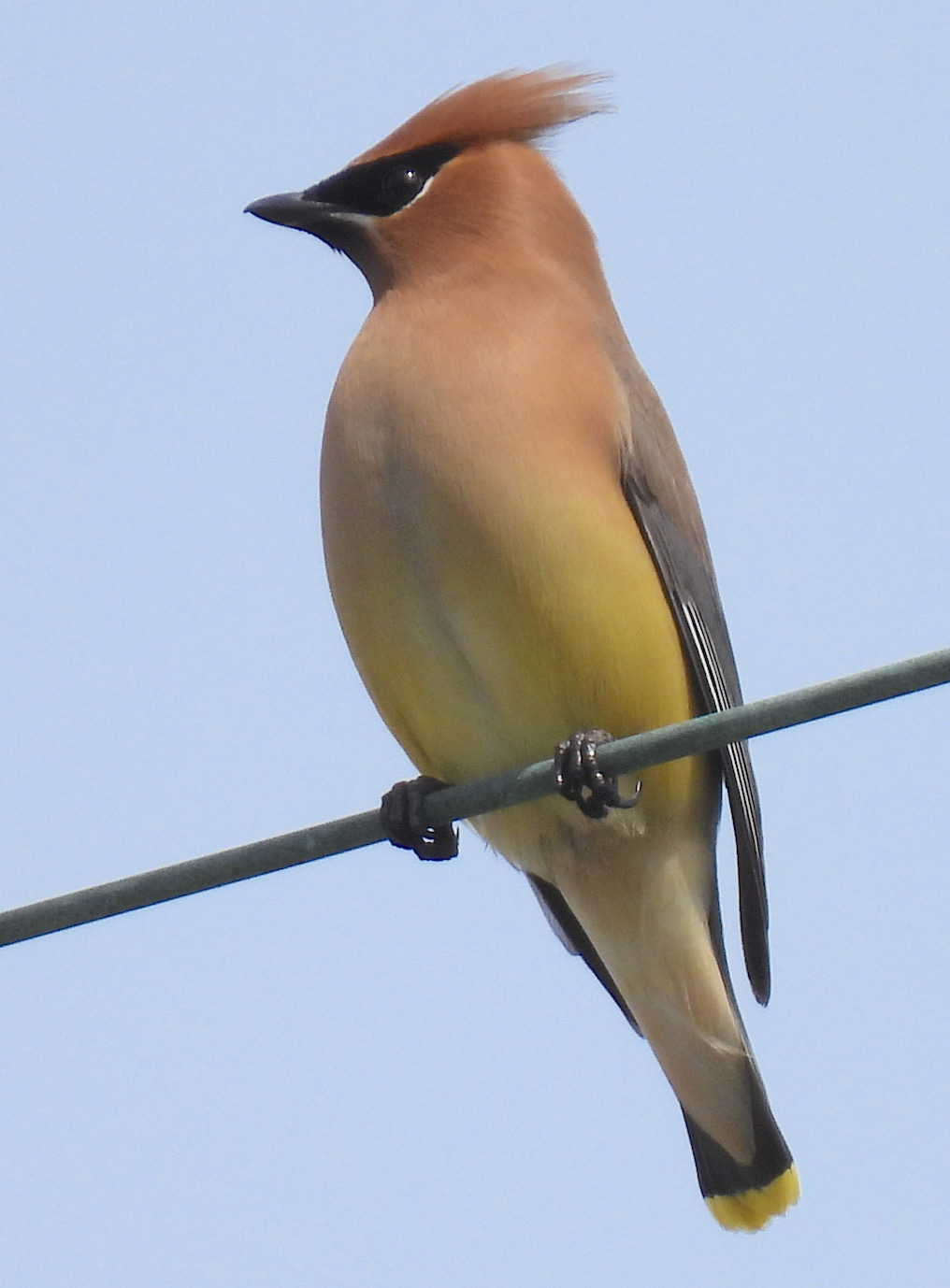
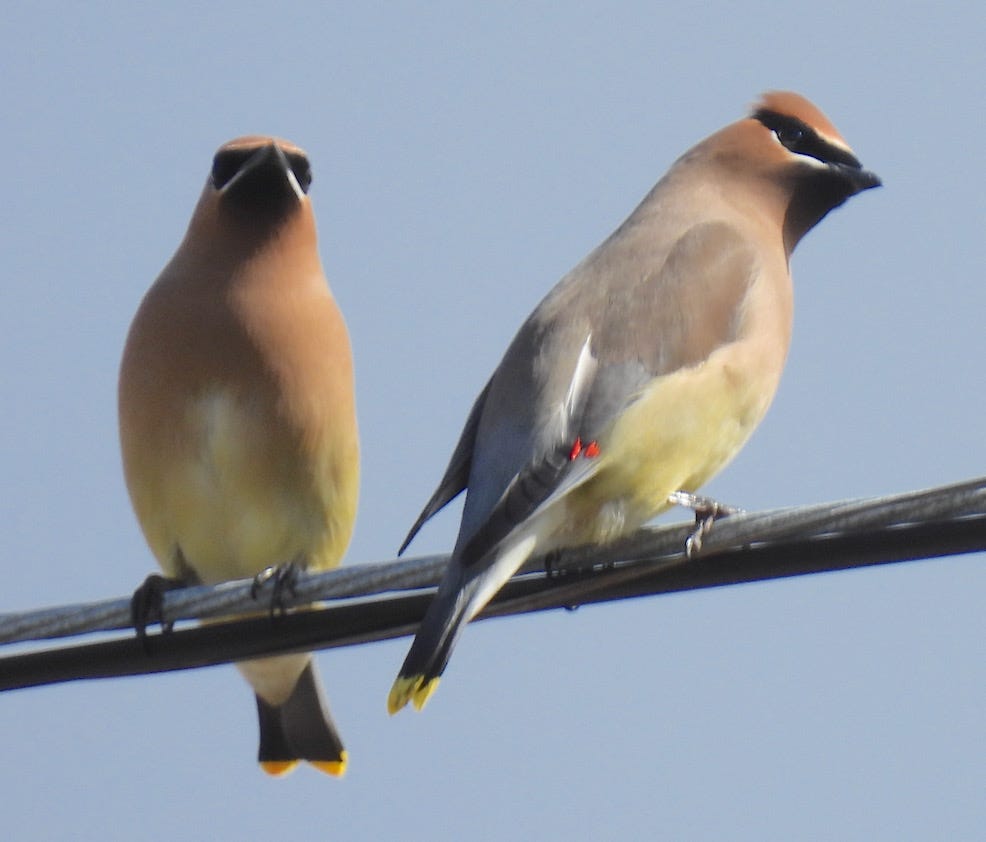

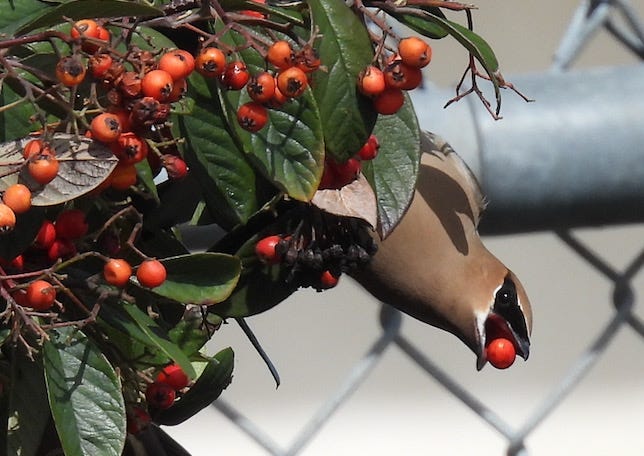
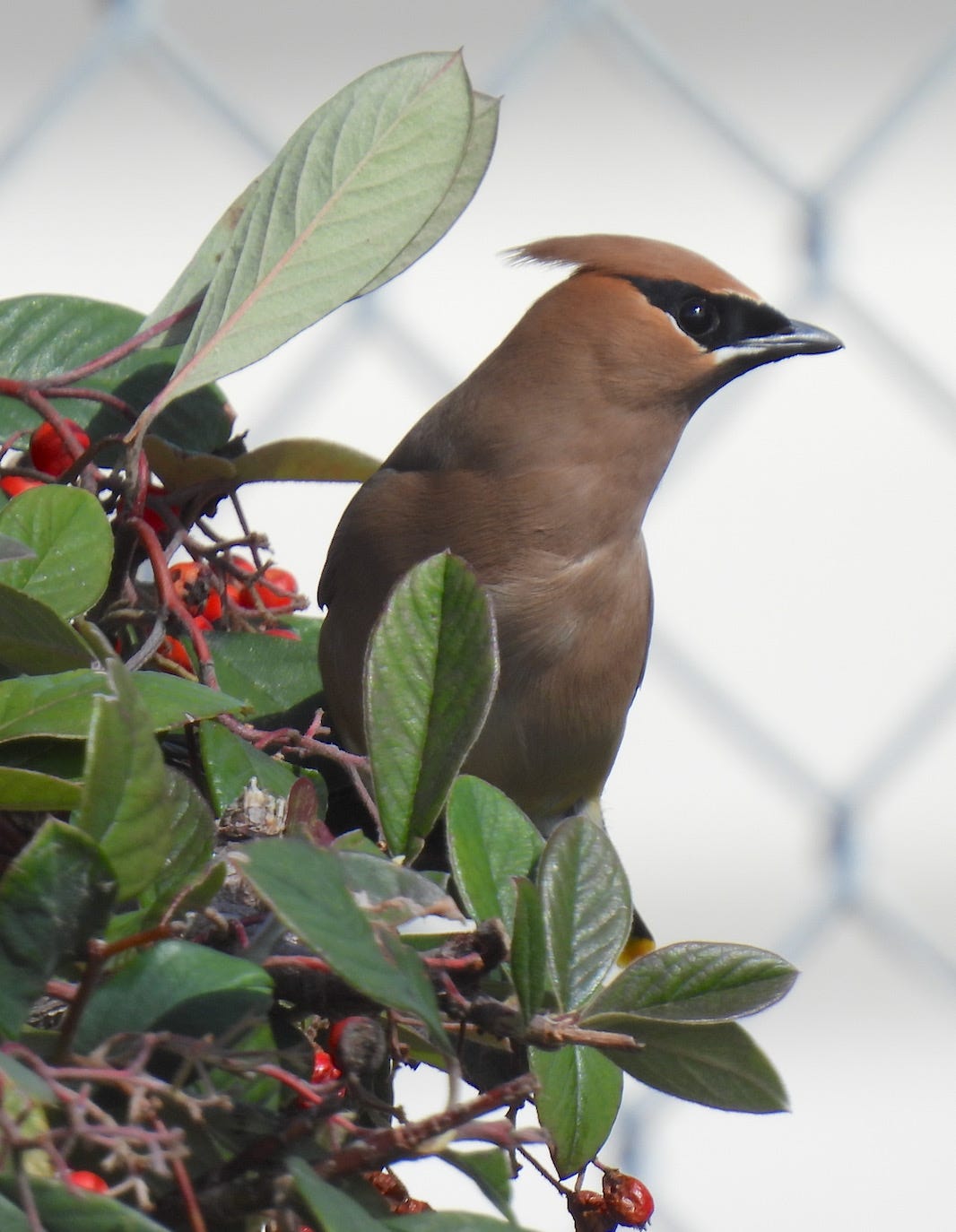

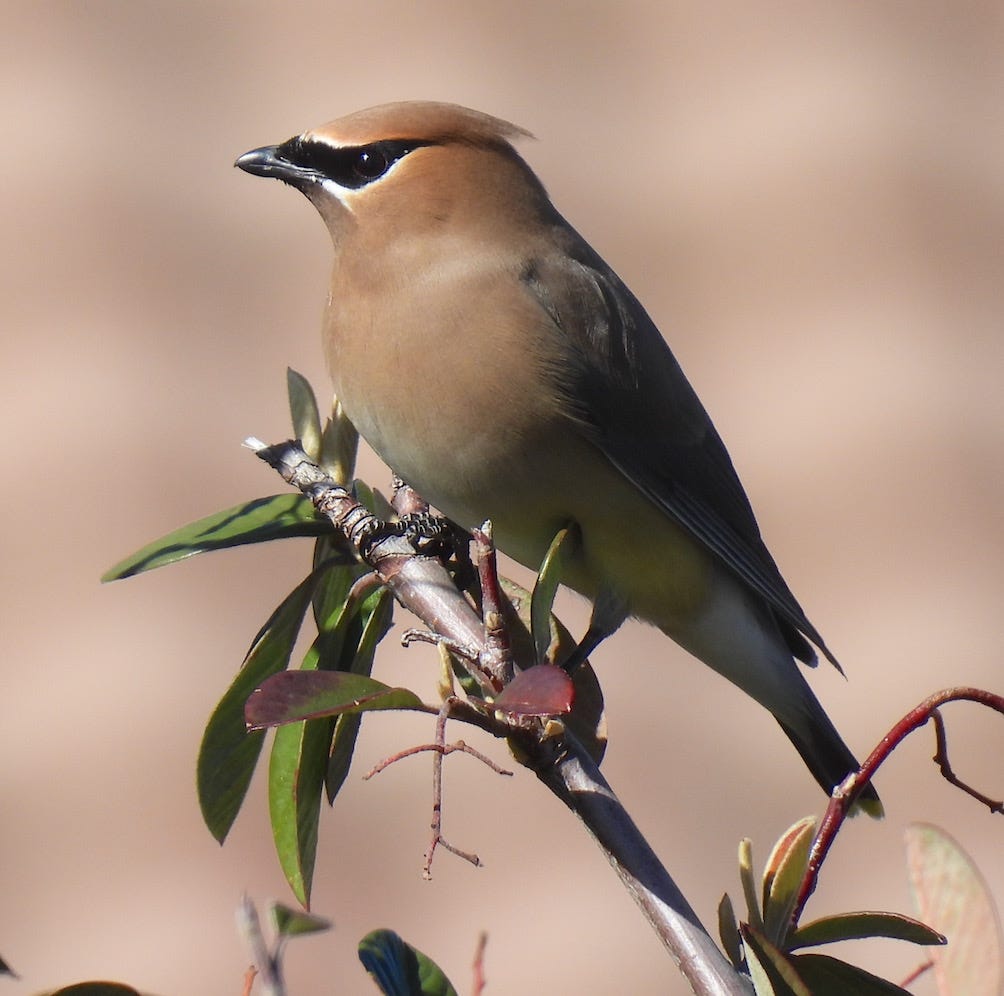
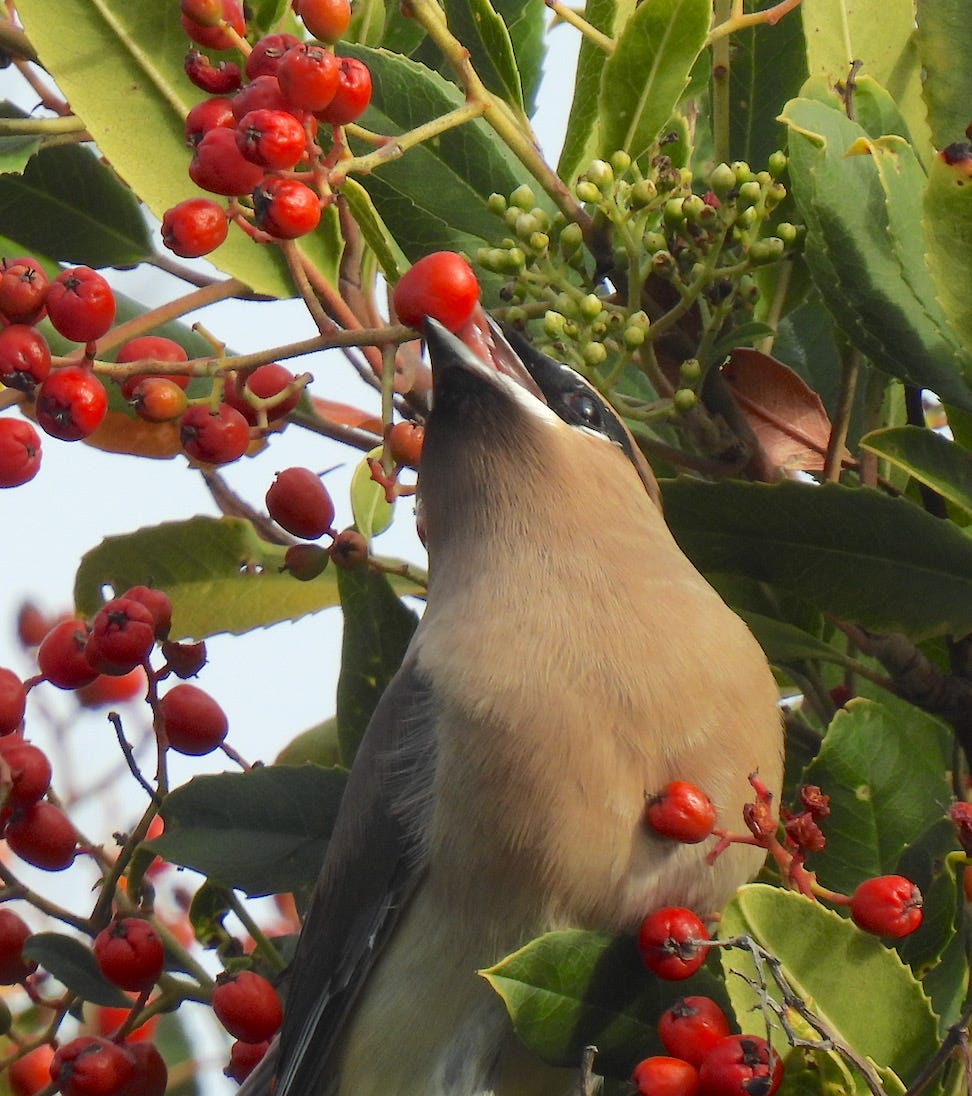
Wonderful post! We had a flock of waxwings in the bare street trees in front of our house today. No berries, but they clearly had indulged earlier in the day since the berries were coming out the other end on my husband's car. :-)
I was remarking on how jumpy they were, taking off if someone walked even 20 feet from their tree. Just what you described. Love these birds.
Ilana
Wow. I too am quite enamoured with Cedar Waxwings. I first discovered them while working on Yerba Buena Island in the middle of the Bay. We had an old Admiral's house as our office and it had a big patio with a huge berry bearing tree next to it. These birds would appear and just go ham and cheese on these berries. We could stop working and watch for as long as they were there it was so entertaining. I love the bird photos you posted and your discovery of these berry crazed birds. They are in my top 10 of favorite birds to watch.